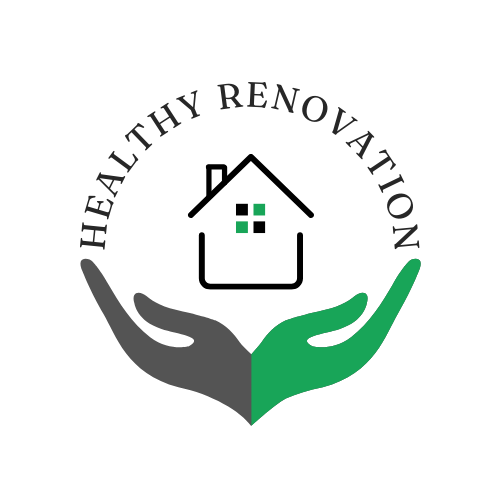Smart Home Technology for Healthy Home Monitoring: The Ultimate Guide to a Healthier Living Space
In today’s fast-paced world, health and well-being often take center stage in our lives. With advances in Smart Home Technology for Healthy Home Monitoring, maintaining a healthy environment has never been easier. From monitoring air quality to ensuring optimal sleep conditions, smart home devices empower homeowners to live healthier lives. This blog will explore the most efficient setup for healthy home monitoring, top five ideas for improvements, and actionable tips for getting started.
The Most Efficient Setup for Smart Home Technology for Healthy Home Monitoring
Achieving a healthy home with smart technology begins with selecting the right tools and integrating them effectively. Here’s a breakdown of an optimal setup:
1. Smart Air Quality Monitors
Why It Matters: Air pollution, allergens, and high humidity can severely impact health. Smart air quality monitors detect pollutants, provide real-time updates, and integrate with air purifiers.
Key Features: Look for devices that monitor PM2.5, CO2, VOCs (volatile organic compounds), temperature, and humidity.
2. Smart Thermostats
Why It Matters: Temperature control impacts sleep, mood, and energy levels. Smart thermostats learn your preferences and ensure a consistent, comfortable climate.
Integration: Combine with air quality monitors to optimize both air circulation and temperature.
3. Smart Water Leak Detectors
Why It Matters: Leaks can lead to mold growth, which poses health risks. Smart leak detectors provide alerts to prevent water damage and maintain a healthy environment.
4. Smart Lighting Systems
Why It Matters: Lighting affects circadian rhythms, mood, and productivity. Smart lights can adjust brightness and color temperature to promote well-being.
5. Smart Sleep Trackers
Why It Matters: Poor sleep can lead to numerous health issues. Smart sleep trackers analyze sleep patterns and offer recommendations for improvement.
Additional Essentials:
Smart Voice Assistants: For seamless control of your health-focused devices.
Centralized App or Hub: A single platform to integrate all smart devices for ease of use.
Top 5 Ideas for Smart Home Technology for Healthy Home Monitoring
These innovative ideas take Smart Home Technology for Healthy Home Monitoring to the next level:
1. Advanced Indoor Air Quality Management
Improvement: Pair smart air monitors with automated air purifiers and humidifiers. Set rules through your smart home hub to activate purifiers or dehumidifiers based on air quality readings.
Benefit: Automatically maintain optimal air quality without manual intervention.
2. Smart Kitchen Health Integration
Improvement: Install smart refrigerators that track food freshness and recommend recipes based on nutrient needs. Combine with a smart water filter system to ensure clean drinking water.
Benefit: Encourages healthier eating habits and reduces food waste.
3. Healthy Lighting Automation
Improvement: Use circadian rhythm-supporting lights that gradually dim in the evening and brighten in the morning. Some lights also offer UV sanitation features.
Benefit: Enhances sleep quality and maintains a germ-free environment.
4. Whole-Home Health Monitoring
Improvement: Leverage smart sensors to monitor radon levels, carbon monoxide, and potential allergens. Connect to your phone for instant alerts.
Benefit: Proactively address environmental hazards before they affect your health.
5. Smart Fitness Zones
Improvement: Transform a room into a fitness hub with smart workout equipment, air purifiers, and smart lighting for energizing ambiance. Integrate with a fitness tracking app to monitor your progress.
Benefit: Promotes regular exercise and supports overall well-being.
How to Implement and Improve Smart Home Technology for Healthy Home Monitoring
Adopting smart technology can seem overwhelming, but it’s easier than you think with these actionable steps:
1. Start Small and Scale Gradually
Begin with a smart air quality monitor or thermostat.
Expand your setup to include other health-focused devices as you gain familiarity.
2. Choose Compatible Devices
Ensure all devices can integrate seamlessly with your chosen smart hub (e.g., Google Home, Amazon Alexa, or Apple HomeKit).
3. Focus on Automation
Set automation rules. For instance, program your air purifier to activate when the air quality index (AQI) reaches unhealthy levels.
4. Optimize Data Insights
Use devices that offer actionable health recommendations. For example, a sleep tracker can suggest improving air circulation or adjusting room temperature for better sleep.
5. Invest in Security
Secure your network to prevent hacking of your smart devices. Use strong passwords and enable two-factor authentication on your smart home apps.
Why Invest in Smart Home Technology for Healthy Home Monitoring?
- Proactive Health Management: Smart devices alert you to potential health risks like poor air quality or allergens.
- Energy Efficiency: Devices like smart thermostats save energy while maintaining optimal conditions.
- Increased Home Value: A smart, health-focused home is appealing to potential buyers.
- Convenience: Automation ensures a healthy living environment with minimal effort.
- Customization: Tailor your home to your unique health needs and lifestyle.
Final Thoughts
Investing in Smart Home Technology for Healthy Home Monitoring is not just about gadgets—it’s about creating a sanctuary that promotes health and well-being. Whether you’re starting with a single air quality monitor or building an integrated system, the possibilities are endless. Prioritize your health, embrace innovation, and let your smart home work for you.
